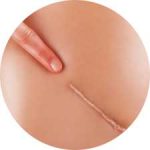Hair Loss Treatment
Over recent years, PRP & Stem Cell treatment has advanced into lots of new areas, with research into their use in hair loss treatments now well-established. We now have an effective and permanent way of reversing hair loss in both men and women, by using a patient’s own, naturally occurring stem cells to stimulate and regenerate new hair growth.
Our stem cells are all building blocks inherent in our bodies, which the body can call on to perform lots of different functions. The stem cells go to where they are needed to create new cells, including bone, nerve, and cartilage. They are doing this all the time, i.e. turn into the specific cell needed at a particular time, to make repairs, rejuvenate tissue, regenerate and re-build. This process of assigning stem cells to a particular job is less effective as we age, but though the messages don’t get through as effectively, the stem cells still exist in the body.
A local anaesthetic is applied to the area where the fat containing stem cells is harvested, usually the abdomen. Once the fat cells have been extracted, they are placed in a centrifuge in the treatment room, and the stem cells are separated and then concentrated ready for reinjection. These concentrated stem cells are passed into the scalp with between two and six injections, depending on the level of hair loss being treated. The cells immediately get to work, beginning their interaction with stem cells that are already present in the scalp and hair follicles, but are sparse and inactive.
The addition of new stem cells precipitates a reaction in those that are dormant in the scalp, and signals to the follicles to begin producing chemicals that effectively create a chain reaction across the other follicles on the head. The previously dormant or deteriorated follicles begin regenerating, once again producing healthy, strong hair.
As the whole treatment is minimally invasive and can be done in a few hours at the Stem Cell Clinic, there’s no down-time after the procedure. There is also no risk that the stem cells will be rejected, because they are those of the patient themselves, and because we used a closed system for harvesting and then reinjecting the stem cells, the risk of any contamination or infection is also kept to an absolute minimum.





